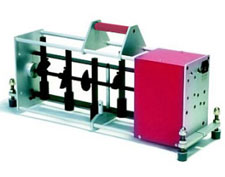Floor Soundproofing
By Jody Cook
Sound Isolation Company
Introduction to Floor Soundproofing

Soundproofing floors is a process that requires a careful evaluation of the current construction and noise conditions; then the selection of a floor underlayment product for soundproofing that will actually work given your specific requirements. There is not a "cookie cutter" soundproofing product that will work for all floors, or even 25% of the floors to be treated for noise.
We consider it our responsibility to make sure you understand how floor soundproofing products will work in your project. Soundproofing products for concrete buildings don't always work for wood buildings; and there are even buildings where both are present! To further explain our approach and experience with floor soundproofing we offer an education section for soundproofing floors.
Soundproofing: The Difference Between IIC and STC

IIC (Impact Insulation Classification) is the measurement of sound energy blocked by a particular soundproofing floor product when used on a tested floor/ceiling assembly.
In this case the soundproofing product is tested on a sub floor with an actual floor covering installed. A tapping machine is used to generate a constant impact and sound level on the floor, then the sound energy is measure below. The difference is the Impact Isolation Classification assigned to the material, when tested under that particular floor covering.
The most accurate noise tests show a Delta (Δ) IIC, the additional IIC value that will be provided when the underlayment and finished floor are installed on the specific floor/ceiling design tested for noise and soundproofing. Remember, most of these noise tests are done on very thick concrete, and that evaluation will not translate in wood construction.
STC (Sound Transmission Class) is a measurement of the reduction in sound energy that a particular soundproofing product will provide. How much noise will the soundproofing product block?
Noise is generated at one end of a very long tube, the soundproofing product is inserted and the sound levels on the other end are measured. The difference is the Sound Transmission Classification, in decibels, of that soundproofing product. STC testing in multi level buildings is done to measure the difference in noise energy from one side of the floor to the other.
It is very important to get the sound test information in a table format that shows the reading at different frequencies. This STC value is only valuable in the comparison of soundproofing products, and even then it doesn't mean a higher rated soundproofing product will work better in your project. The specific floor/ceiling noise can vary from one test to another, and this can dramatically affect outcome of the sound test. Some soundproofing tests are done with a ceiling below; some are done without a ceiling at all. Other soundproofing tests may have a ceiling with added isolation channels, insulation, etc. As a purchaser of soundproofing products, it becomes very hard to decide what will happen in your project.
Two Factors in Floor Soundproofing Products
Most important in choosing floor soundproofing products are:
1. How will the floor soundproofing product work in a floor/ceiling assembly? Or better yet how will the soundproofing floor product work in your floor/ceiling.
2. When this floor soundproofing product is used, what is the performance at the frequencies that matter in your project?
Click on Soundproofing to continue.






